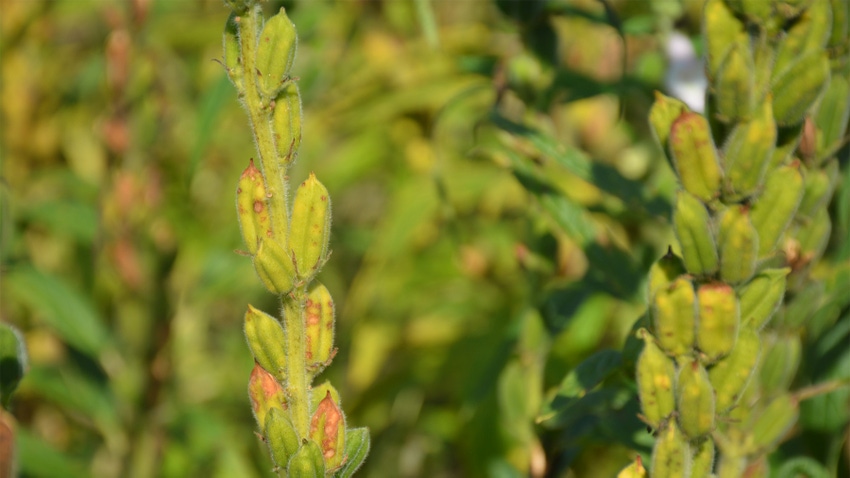
At a Glance
- Sesame is viewed as a low-input, drought and heat-tolerant crop grown mainly for its high-oleic and linoleic acid seed.
- For many farmers, the strongest attraction of sesame is the fact that deer don’t like it.
There’s a strong demand for sesame. The specialty crop, a key ingredient in foods like hummus, rolls and the famous sesame seed hamburger buns, has sparked interest from farmers in the Carolinas and across the Southeast.
Carl Coleman, a Dillon, S.C. seed dealer, estimates 13,000 acres of sesame will be planted in North Carolina and South Carolina this year. That’s up from 11,000 acres across both states last year. Coleman and his business partner Michael Benjamin, and their company Choice Ag, have contracted with farmers to grow sesame for Sesaco, a fully integrated sesame supply chain company headquartered in Austin, Texas.
Sesame is viewed as a low-input, drought and heat-tolerant crop grown mainly for its high oleic and linoleic acid seed. For many farmers, the strongest attraction of sesame is the fact that deer don’t like it.
“Everybody who grew sesame last year is not growing it again this year, but the guys that are have substantially upped their acres. Plant it on your light, less productive land and where you have deer pressure,” Coleman said at a sesame meeting Feb. 28 at the Wilson County Extension Center in Wilson, N.C.
At the meeting, David Suchoff, North Carolina State University Extension alternative crops specialist, provided a rundown on the best management practices for growing sesame in the Carolinas. Here 10 highlights of his recommendations:
Sesame likes warm soils, greater than 70 degrees Fahrenheit. The ideal planting window is the second week of May to the first week of July.
If you already produce small grains, you have the infrastructure and equipment you need to grow sesame. Plant sesame with a drill or planter. You may need new plates if you use a planter. You get better depth control planting with a planter than planting with a drill. Harvest with a combine, but you will need to make changes to the combine to harvest sesame.
Plant your sesame after a rain event, but never before a rain event, especially if your fields are prone to crusting.
As a tiny seed, you would think to plant sesame at shallow depths. That is not the case. The seed needs to be planted deep, from 1 inch to 1.5 inches based on soil type and most importantly where that moisture layer is.
The seed needs to sit in moisture. If there is no moisture or if it’s in moisture for a day and it dries up, that seed dies. You need to go out the day you’re planting, dig down, find that moisture layer, and then set your planter or your drill about a half an inch to a quarter inch below that moisture level. That should ensure that you will have the moisture for three days or so.
Even though you can plant on narrow row spacing, wider may be better. Plant sesame in a 30-inch row or even wider to allow for more air flow to the crop. Fungicides will still need to be applied, but keeping the sesame crop open will help with disease.
Sesame does not require a lot of nitrogen. Apply 60 to 80 units of nitrogen. Higher nitrogen rates may increase lodging and produce more vegetative material at harvest.
When the sesame dries down, you need to be ready to harvest, at 7.5% moisture.
The biggest challenge of growing sesame is weed management. It is not a good competitor with palmer Amaranth, nutsedge or any of the aggressive weed species. Few herbicides are currently labeled for sesame.
If you cultivate and are comfortable cultivating, this is a crop that loves to be cultivated. If you are not cultivating, you need to start off as clean as you possibly can. Have a really good burndown program prior to planting. When it comes to preemergent herbicides, we are very limited in terms of what is labeled.
Read more about:
SesameAbout the Author(s)
You May Also Like






